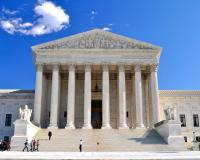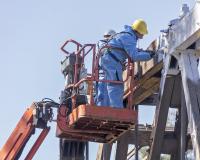
Vibrant Environment
Governance And Rule Of Law
All | Biodiversity | Climate Change and Sustainability | Environmental Justice | Governance and Rule of Law | Land Use and Natural Resources | Oceans and Coasts | Pollution Control

On January 23, 2020, EPA and the U.S. Army Corps of Engineers released a final Navigable Waters Protection Rule to redefine “waters of the United States” (WOTUS). This new rule repeals a Reagan-era definition rule and adopts an even more limited definition of the waters of the United States that are subject to the federal Clean Water Act.

Each year, the Environmental Law and Policy Annual Review (ELPAR)—a collaboration between Vanderbilt University Law School (VULS) and ELI—identifies articles that propose innovative law and policy approaches to pressing environmental problems. This year's awardees propose creative approaches to a range of cutting-edge environmental issues:

There are plenty of blog posts stating portable electronic devices (PEDs) and industrial settings don’t mix, but most are about distracted working: PED use is unsafe because employees are distracted and unfocused and accidents can happen. That’s not this post. Instead, I want to talk about the legal and safety challenges that pose liabilities when PEDs are intentionally used as part of the work environment—especially within designated hazardous environments.

In the past, some domestic and international attempts to alleviate the burdens of migrant populations and establish legal protections for them have been implemented, but many of these protections are not specific enough and lack legally binding measures adequate to ensure that peoples displaced by weather-related disasters are protected on a global scale. International norms are important, as they can at least symbolically set a standard that national governments can follow.

Countries around the world are slowly sinking and the list of vulnerable communities is only getting longer. According to the International Displacement Monitoring Center, 28 million people in 2018 were displaced from their homes due to regional conflict, violence, and environmental disasters.

On the surface, the 24-Second Shot Clock, the Designated Hitter, and the Council on Environmental Quality (CEQ) NEPA regulations do not have much in common. But bear with me.
In 1954, the National Basketball Association (NBA) faced a problem—teams leading late in games would hold on to the ball, literally for minutes on end, in an effort to preserve their advantage. Ball-handling wizards like Bob Cousy could dribble out the clock, forcing the defense to chase him around in futility or commit a foul. The games got boring. NBA executives decided to install a shot clock to make their product fast-paced and exciting. The rest, as they say, is history.

On the bright, late autumn afternoon of November 19, over 100 people gathered at Georgetown University Law Center for a half-day forum on “Modernizing International Environmental Law” in celebration of Prof. Edith Brown Weiss. Co-sponsored by the Environmental Law Institute, the Georgetown Environmental Law Review, and the Georgetown Environmental Law and Policy Program, the symposium was more than a tribute to a famous scholar and beloved teacher. The presentations, panels, video calls, lively discussions, and reception portrayed a pathfinder with a strong moral compass and deep conviction—such that all of us felt inspired and motivated to continue in her footsteps.

When it comes to the history of the environmental law and policy in the United States, the heroic stories most of us have heard concern men—John Muir, Aldo Leopold, Henry David Thoreau, Teddy Roosevelt, Gifford Pinchot, David Sive, David Brower, to name but a handful of the most famous. But we are less likely to know the achievements of the women who molded modern environmental policy despite having to clear hurdles seldom encountered by men.

Some months back, I received a visit from two leaders in the climate science and sustainable energy arena: the former president of Climate Central, Paul Hanle, and David van Hoogstraten, who had just left his position as director of federal environmental regulatory affairs at BP America.

The public health dangers posed by lead exposure have been recognized and documented since the mid-20th century. Despite the pervasiveness of lead-based paint in buildings, including homes and schools, experience has shown that laws can effectively address the issue by phasing out lead paint.